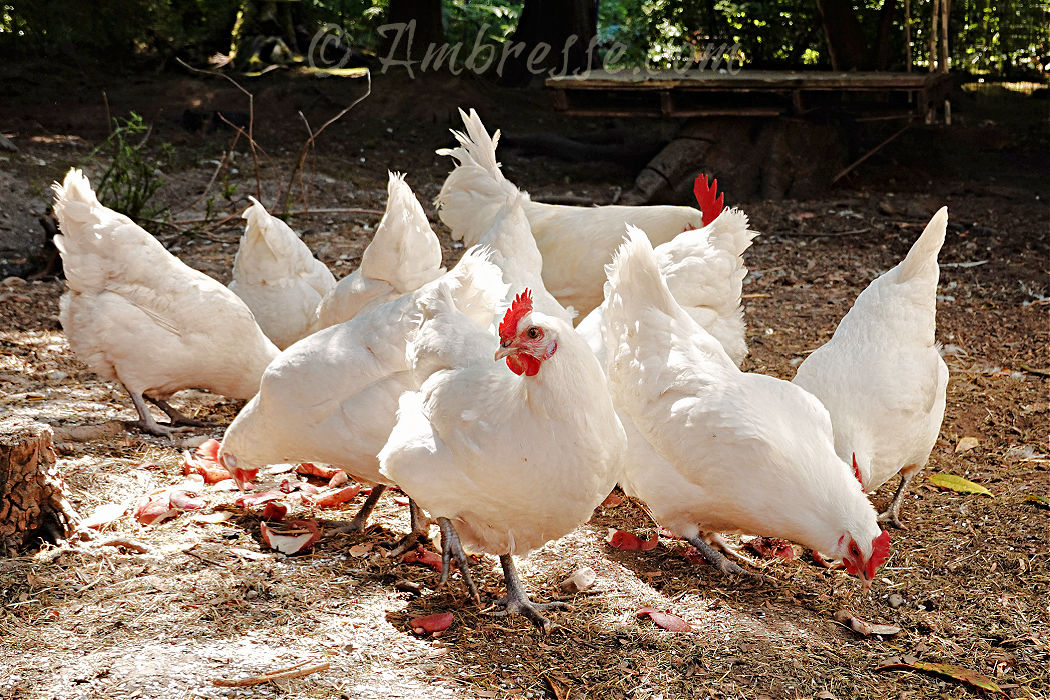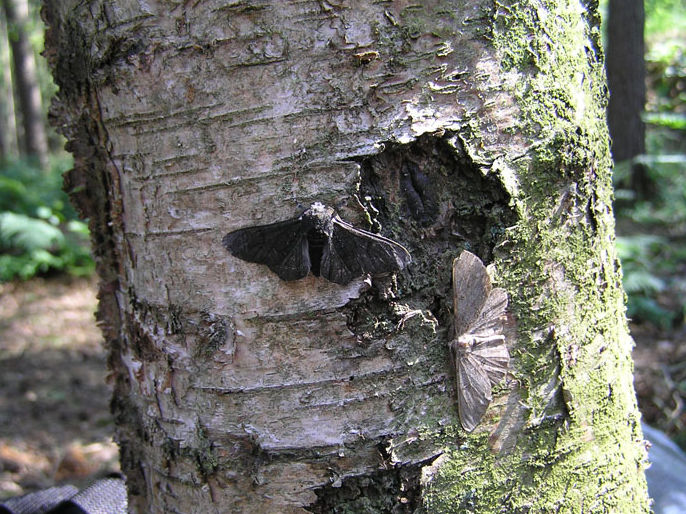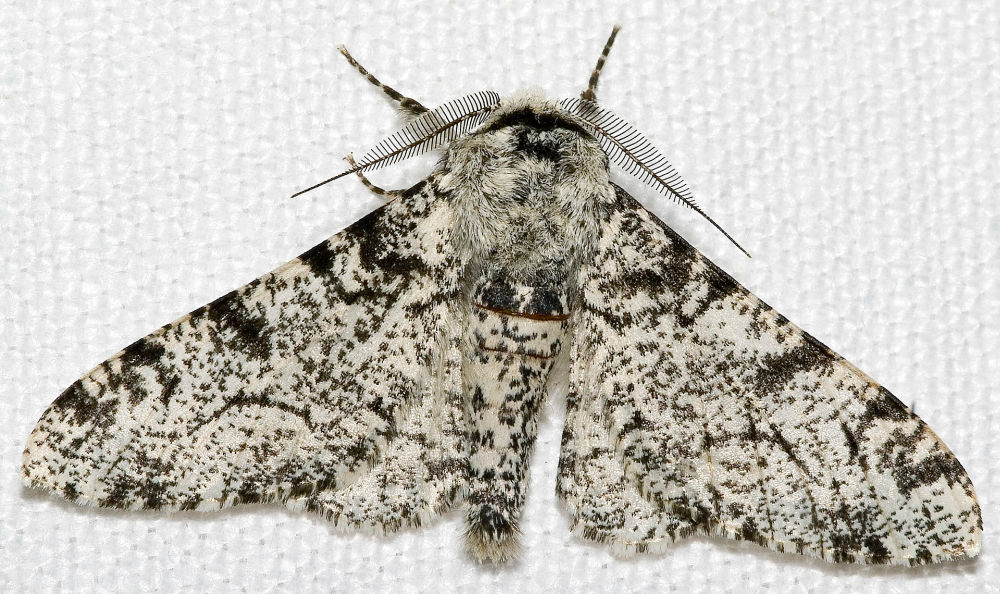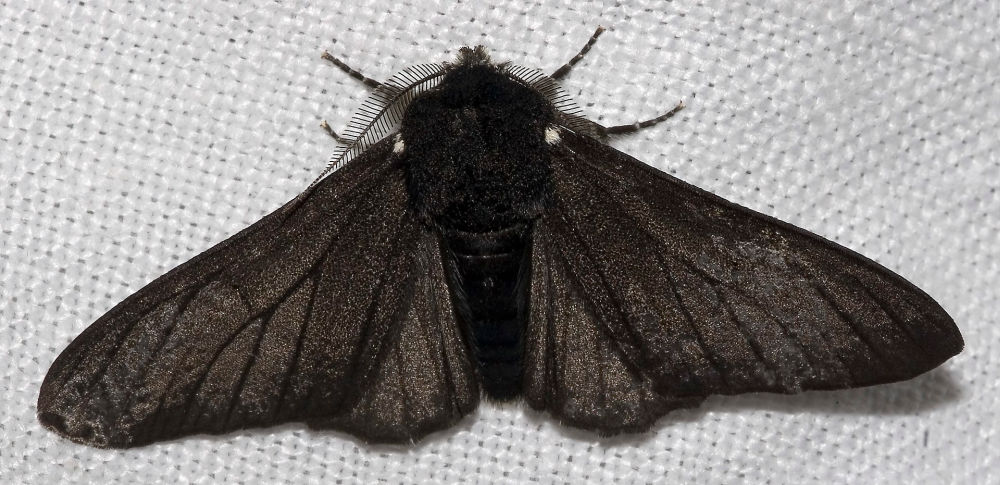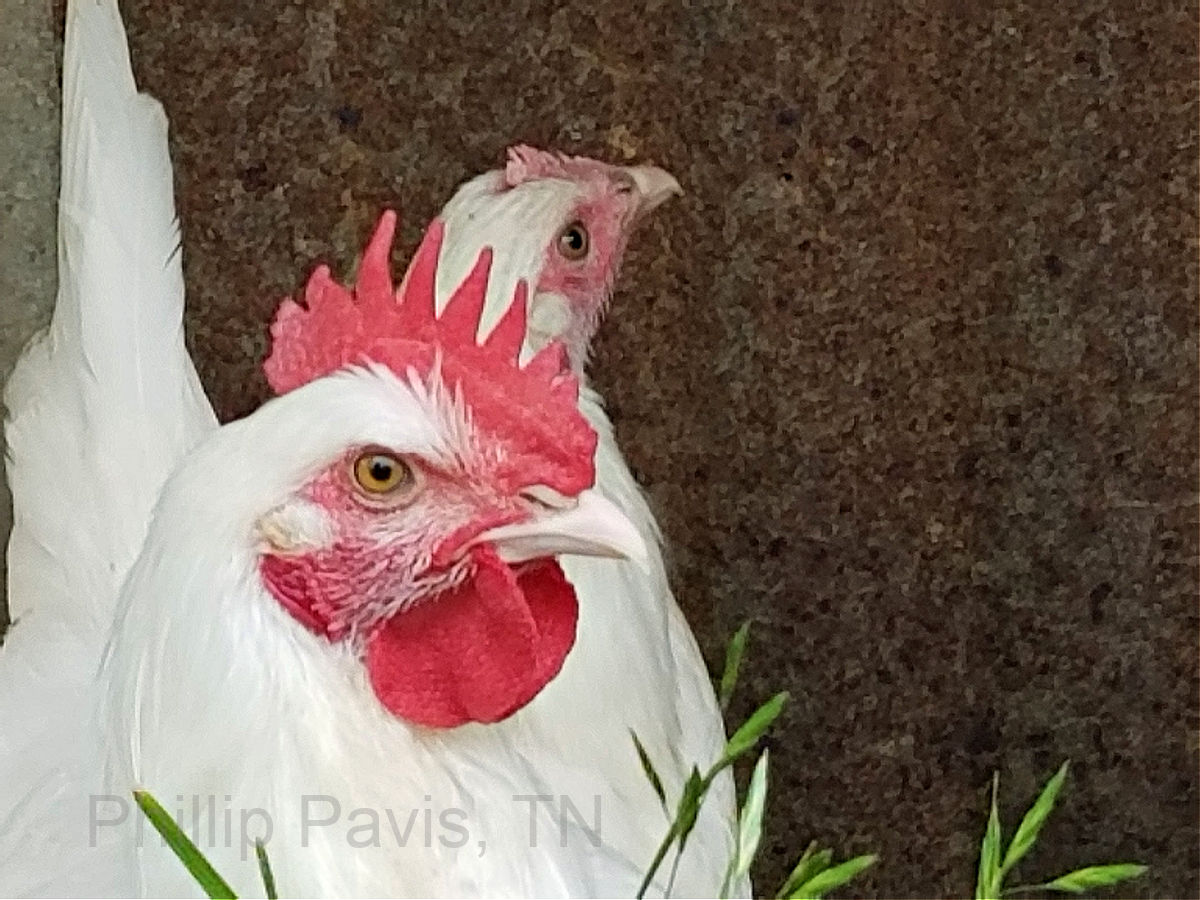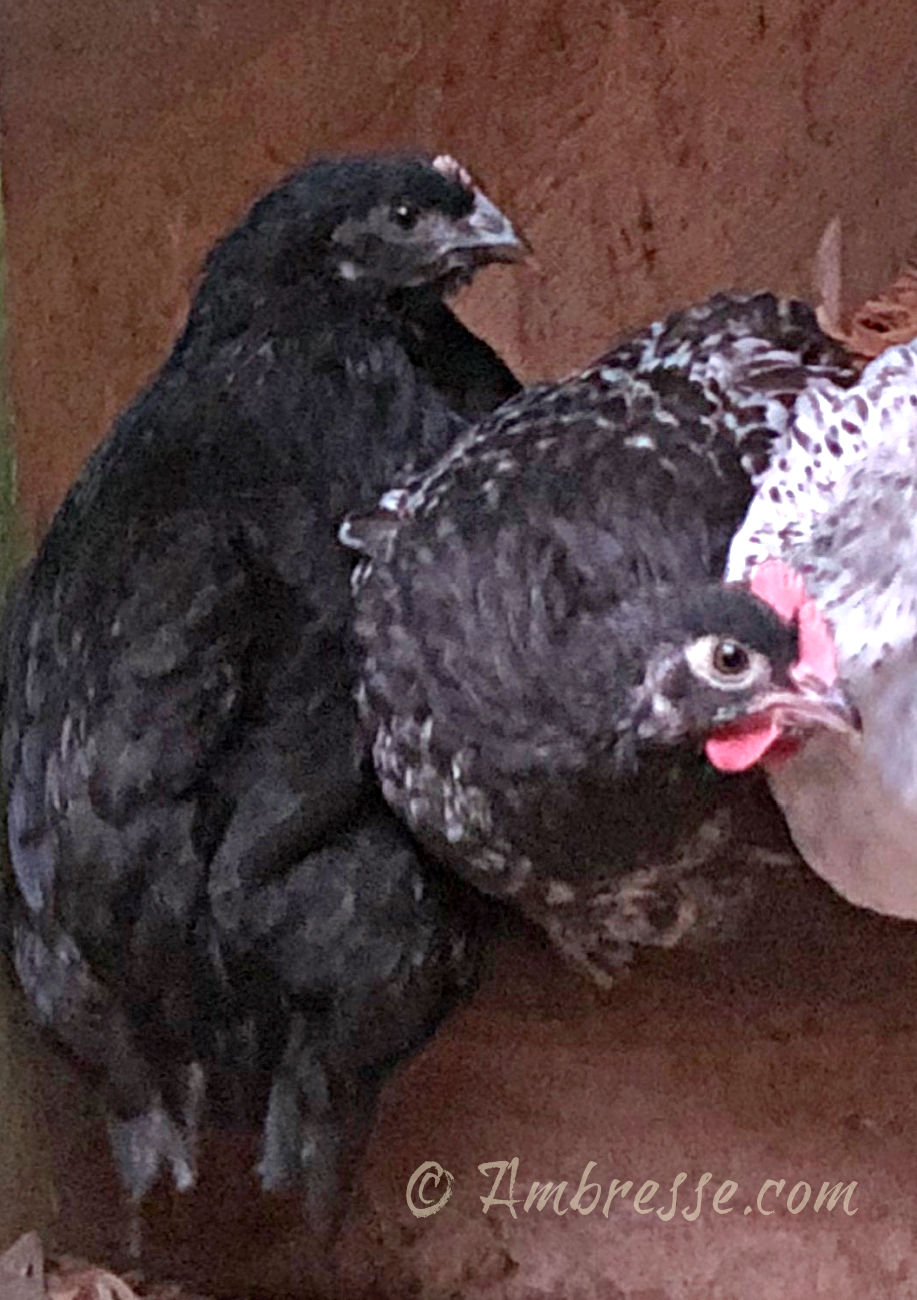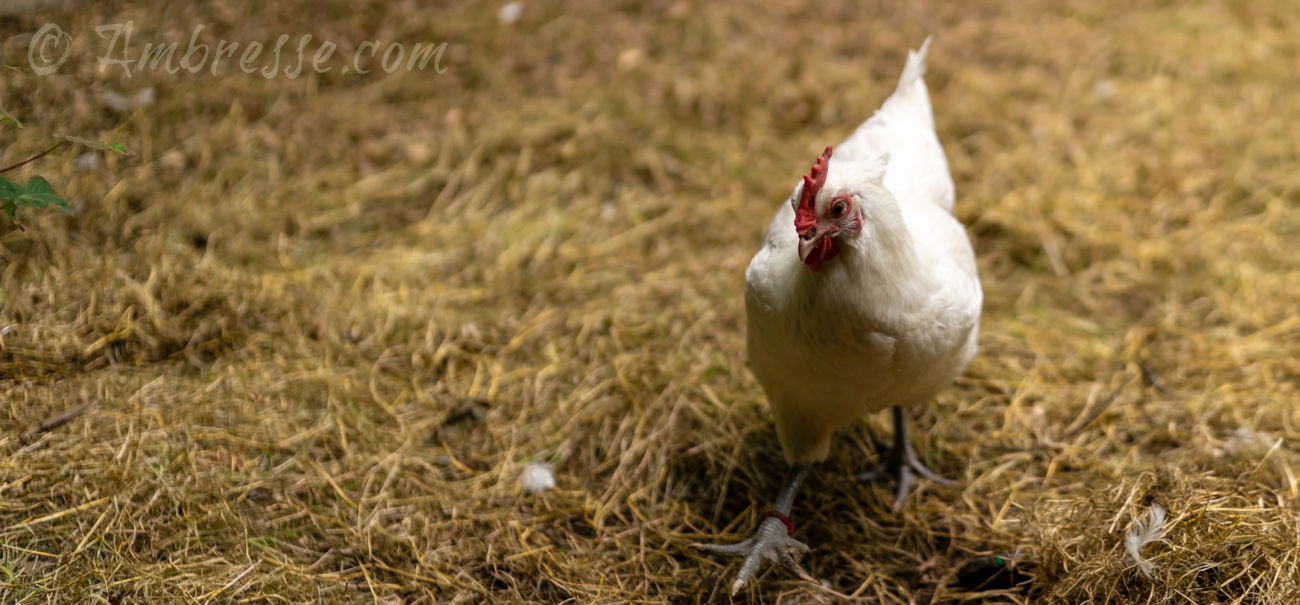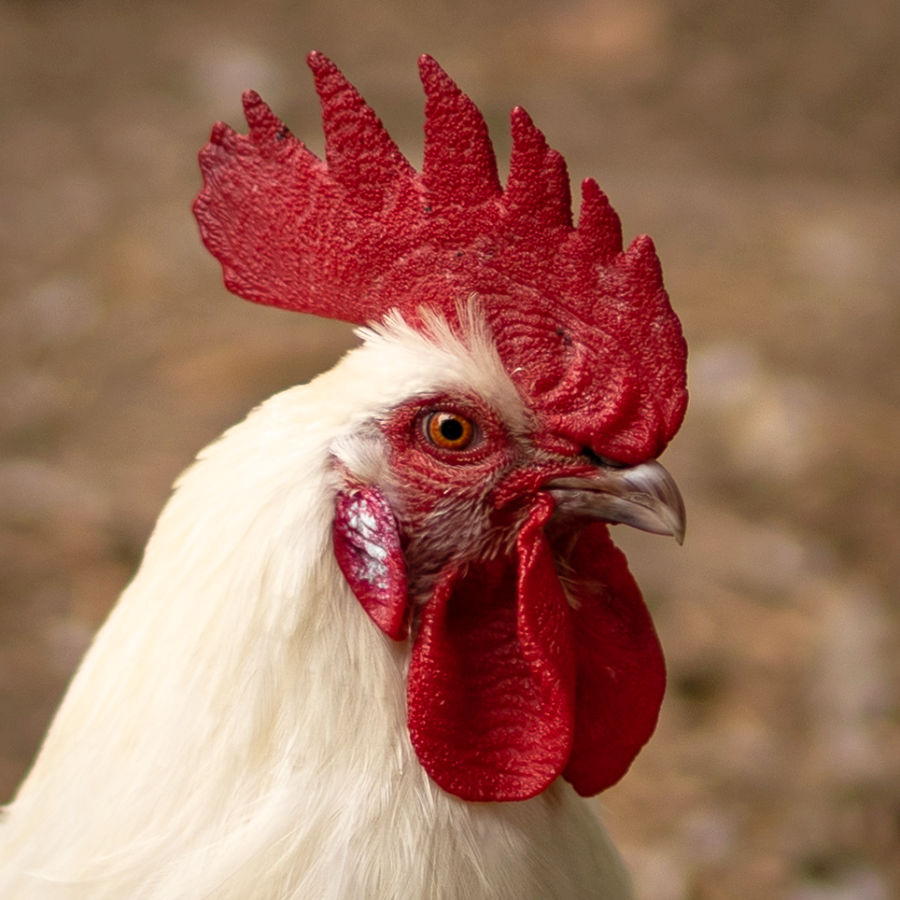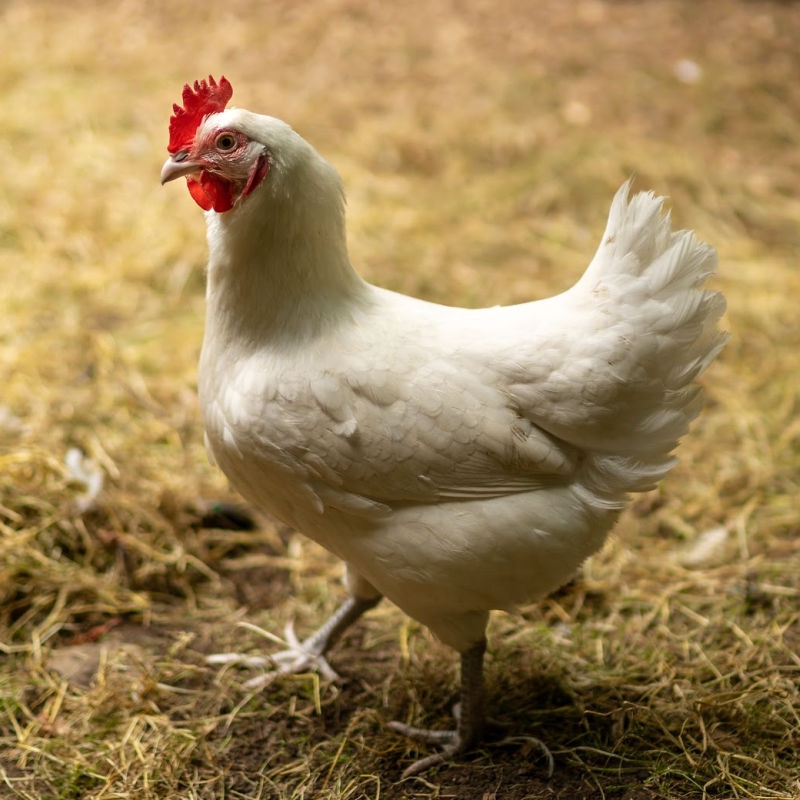Selective Breeding
What is selective breeding?
Selective breeding is the process that aggregates desirable genetics in your flock while eliminating negative genetic traits. It is the way flocks are improved upon and kept healthy.
Selective Breeding is Based on the Principle of Natural Selection
Natural selection1 is defined as the process whereby the organisms which are better adapted to their environment tend to survive and produce more offspring than those less adapted to their environment.
In nature and depending on the environment, certain animal traits better help an animal or species survive. More animals with the favorable traits survive, and they produce offspring with the same favorable traits, and these offspring also better survive.
At the same time, animals lacking an ideal set of survival tools tend to die out. Over time, natural selection shifts the balance between the equipped and the not-so-equipped animals, as those better able to survive and reproduce will do so at a greater rate than those which lack a full set of survival traits.
In other words, animals that possess heritable traits that increase their chances of survival will tend to multiply, and their genes will begin to be favorably represented among the species in that area.
Natural selection exerts pressure on a population's genetic makeup.
An example of genetic pressure exerted by an environment can be seen in the peppered moth population in England in the late 19th century. Over a fifty-year time span, the moths in Manchester, England, went from predominantly light, to predominantly dark in color.
This shift of peppered moth appearance is well-documented. As soot from coal-powered factories blackened tree trunks across the city, the typically white-winged moths began to stand out against the darker trunks, and predators took both notice and advantage of their good fortune.
At the same time, the dark morphs of the species began to find it easier to hide, which tipped the balance in favor of their survival. In 1900, 50 years later, 95% of peppered moths in Manchester were of the dark variety.
The 50-year process that favored the survival of black moths over white ones is not evolution. It is natural selection. Today, the air in Manchester is much cleaner, and both morphs continue to thrive, each in areas that favor them - black morphs against darker backgrounds and the typical white moths against tree trunks that are once again light.
The change in environment is once again exerting genetic pressure on the peppered moth population. The ratio between dark and light peppered moths is evening out. This is exactly what one would expect, according to natural selection theory.
Artificial Selection and Genetic Pressure
Human choice - "artificial selection" - exerts pressure on the genetics of flocks every bit as much as natural selection does. The choices humans make as to which birds will breed is known as artificial selection, because it is not nature influencing genetics, it is humans.
Selective breeding is virtually the same thing as artificial selection.
Selective breeding powers the improvements that are possible in your flock.
Selective breeding won't turn a chicken into a duck, but it CAN increase body size, change and improve upon body shape, increase the average number of eggs laid per year, and boost each bird's overall health and resistance to disease.
All of these changes can go just as far as the genetic possibilities that already exist allow.
Change occurs slowly and in increments over several years, but you'll recognize the changes when they happen. Eventually the members of the flock will begin to look and/or perform as desired.
Good Reasons for Selective Breeding
Some very good reasons for selective breeding in American Bresse are:
- To develop a flock whose desirable traits have strong heritable components and can therefore be passed on to following generations.
- To continually improve the genetics and condition of the flock, including health factors, and the physical qualities set forth in a standard of perfection.
- To eventually eliminate unwanted traits in the flock.
- To improve product quality and to boost the yields from the flock, especially when the flock has been bred for specific characteristics. This is particularly true of Bresse chickens which have been selectively bred for centuries for meat quality and taste.
Breeding Selectively is a Must for Flock Improvement
For many years I maintained a household flock of blue-egg-laying hens. We enjoyed eating the delicious eggs, and the variety of plumage colors was a pleasant plus.
I was a keeper in those days, not a breeder. This flock of mine followed the course of least resistance without any input from me as to which animals would or would not participate in the breeding program.
One of the original chicks turned out to be a cockerel, to my delight. Therefore we were able to replenish the flock from time to time with the help of an incubator or a broody hen. The foundation stock was healthy, and we suffered few losses, other than to an occasional marauding raccoon.
There were no goals for the flock, and no selective breeding. The flock continued apace, blending genetics aimlessly.
Without guidance, the reverse of selective breeding occurs over time.
Over five or ten years, the flock can very slowly devolve, generation by generation, into a fairly homogenous hodge podge of average genetics.
- Average numbers of eggs laid per year
- Average growth rates
- Average or lighter than average adult weight
- Average body type
- Average plumage or leg coloration
In other words, mediocrity. This isn't wrong or right, per se. It just means that your flock won't improve all by itself.
You have to make choices and then implement them regularly if you wish continually to aggregate into your flock the traits and genetics you desire.
The Process of Selective Breeding in American Bresse Chickens
At the outset of a selective breeding program, one may consider very few of one's birds to be ideal specimens of the breed. It may feel like one's breeding program has miles to go! That's okay, because the process of selective breeding is not complicated.
Simply choose out of your flock the birds that best embody the traits you wish to embed into your flock, and use those birds in your breeding program. (If you need help on how to identify desirable traits in the American Bresse chicken, simply keep reading.)
Choose the best that you have, and then choose the best out of their offspring. Rinse and repeat. As generations pass, you will see overall marked favorable changes in your flock - the very changes toward which you are working.
In this fashion, selective breeding aggregates in the flock the chosen genetics and modifying factors that will eventually result in a flock of excellent birds that closely conform to the standard of perfection.
In general, here is how a breeder of American Bresse chickens will practice selective breeding:
- Use the American Bresse standard of perfection as a guideline for choosing which birds are keepers for the breeding flock. That standard is still in draft form as of 2023, but it is in good hands in the meantime! Find it here.
- Use for breeding the cocks and hens that better represent the ideal bird according to the standard. This breed is only a few years into selective breeding by breeders in the United States and Canada, and therefore we ALL have birds that need improvement! Nevertheless, there are enough excellent genetics in North America to enable breeders to eventually produce some truly stunning specimens of the American Bresse chicken breed.
- Don't compare your bird to a favorite Bresse photo - assess the birds against the descriptions in the standard, and then rank the birds against each other.
- Successive choices of breeding stock will follow the same criteria. Those animals in the flock that more closely resemble the description(s) in the standard are the ones that should be retained in the breeding flock. In this fashion, each successive generation more and more closely represents the breed standard. For example, a rooster that weighs six pounds at one year old should earn itself honors as a main course, while an eight-pound cockerel is selected to sire the next generation of chickens. The following generation will have many more eight-pound cockerels, and fewer six-pound cockerels.
- Take great care as you chase certain characteristics that you do not LOSE other essential but less visible breed traits, such as fat marbling or thin white skin.
- See The Process of Selective Breeding, by Ms. Mandelyn Royal, which describes how Ms. Royal goes about hatching and choosing and sorting through her grow outs to find those few birds with that "it" factor needed for use in next year's breeding program.
How to Breed a Better Chicken
The following video embodies the above specifics of selective breeding. Ms. Jeanette Barringer, Research and Technical Programs Manager at the Livestock Conservancy, explains how to evaluate the birds you currently have, how to compare one bird to another, parameters for choosing the better bird, and how selective breeding will result in improvements in the flock over time.
Watch the video below, titled Building a Better Chicken, as Ms. Barringer picks up a cockerel and shows you how to look for various traits, and why.
How to Breed a Better Chicken
Evaluating Each Bird with an Eye to Selective Breeding
As a quick recap, Ms. Barringer describes the process of comparing two chickens of the same breed, sex and age to each other. By weighing the birds and then putting hands on the birds, one can detect the bodily characteristics, make comparisons one bird against the other one, and then choose the bird that is closer to the ideal you have set for your flock.
Rank each member of the breeding flock. Do not use for breeding any birds that fail the hands-on test.
Select a new bird of the same breed, sex and age to compare to the bird you have retained. Another winner will arise out of this match up.
In this fashion, you will end up with one or two roosters that better meet the ideal you have set. You will also end up with a number of pullets or hens that pair best with your roosters against the desired standard.
As you compare birds, you'll give attention to these factors:
Selective Breeding: Physical Traits to Consider
Overall broadness, from head to tail.
Broad birds are healthier and carry greater capacity for meat yield and egg laying.
- Head – should be big and broad. Usually the birds with the bigger broader heads are also broader all the way through the rest of the body.
- Heart girth - Cup the body with thumb and finger at the point where the wings meet the body and go straight down. Broader is better.
- Back - Put hand on top of the back. Flat is good; no curvature over back.
- Pelvis - Broad is good, without a noticeable taper at the pelvis.
- Meat quality - with chicken on its back (belly outward), feel the breast bone, also called the keel. Straight is good. You want the meat to go almost to the end of the breast bone, swallowing nearly the entire breast bone in muscle. Evaluate the meat quantity by ‘pinching’ the sides of the breast bone; the less bony the better.
- Body depth - view the bird from the side, and gauge the width from back to belly. The longer the imaginary line just in front of the legs, from the back underneath the wings straight down to the belly, the better.
Egg-laying capacity.
Measurements in both hens and roosters, because the rooster passes egg-laying capacity down to his daughters.
- Measure the distance from the end of the breastbone to the cloaca with your fingers. How many fingers can you place from tip of keel to cloaca?
- Shape of pin bones (pelvic arch) – The pin bones should be straight, not curved inward toward each other. (Too much curvature can cause egg binding.)
- Width between the pin bones – wider is better.
Aesthetic Features.
Compare to the standard of perfection, which is usually found with the American Poultry Association, but in the case of American Bresse (not yet included in the APA), the current draft standard, here.
Only the top 10-20% of birds are meant to be kept for breeding. The many that don't measure up can go to one of two destinations: To the dinner table, or in the case of hens, to the egg-laying flock.
The "winner" of each comparison (same age, sex, breed) becomes the standard for the flock until it "loses" to a better bird.
Save an extra rooster or two, to hedge against losses to predators (or disease).
The Process of Selective Breeding
An experienced American Bresse breeder and poultrywoman, Mandelyn Royal, describes the process of selective breeding that she uses on her farm to embed improvements in her flock. Click here to look over her shoulder as she compares birds and makes her choices.
- Home
- Selective Breeding
References:
- https://www3.beacon-center.org/blog/2012/10/01/evolution-101-natural-selection/
- https://www.youtube.com/watch?v=TZaHQV22zqM
Accessed 8/8/2020 - https://www.amnh.org/exhibitions/darwin/evolution-today/natural-selection-vista
Accessed 2/25/2022 - https://livestockconservancy.org/
- https://www.nationalgeographic.org/resource/artificial-selection/
- https://www.pbs.org/wnet/nature/dogs-that-changed-the-world-selective-breeding-problems/1281/
- https://www.treehugger.com/what-is-selective-breeding-4858804
- https://biologydictionary.net/selective-breeding/
- https://www.yourgenome.org/theme/what-is-selective-breeding/
- https://old-ib.bioninja.com.au/standard-level/topic-5-evolution-and-biodi/51-evidence-for-evolution/selective-breeding.html
- https://www.medicalnewstoday.com/articles/326253
- https://en.wikipedia.org/wiki/Selective_breeding
- https://www.bbc.co.uk/bitesize/guides/z6trd2p/revision/1
- https://www.khanacademy.org/science/ap-biology/natural-selection/artificial-selection/a/evolution-natural-selection-and-human-selection
- https://www.icr.org/article/peppered-moth-still-not-evolving
- https://en.wikipedia.org/wiki/Peppered_moth_evolution
- https://www.responsiblebreeding.eu/responsible-breeding.html
- https://www.responsiblebreeding.eu/breeding-and-sustainability.html
Overheard...
Tasty Recipe! "I processed my first batch of Bresse... Today I roasted one according (somewhat) to the recipe posted on Ambresse. It was delicious! Tender, moist and succulent... So happy I chose this breed!" (B.E., MN, 12/11/2024).
Success: "I can't believe all the inquiries we get through your website. And it's been a great resource to send people to who are interested in the (AB) breed" (Utangard Farm, NH, 5/5/2025).
Informational: "Your site has the first accurate information about American Bresse chickens that I have seen in English. Thanks for your diligent work" (L. Wooton, NC, 12/17/2024).
Translate This Page
Traduire Cette Page
Traduzca Esta Pagina

News
American Bresse Breed Club web pages can be found under the Breed Club tab on the navigation bar. Any changes in Club status will be posted here!
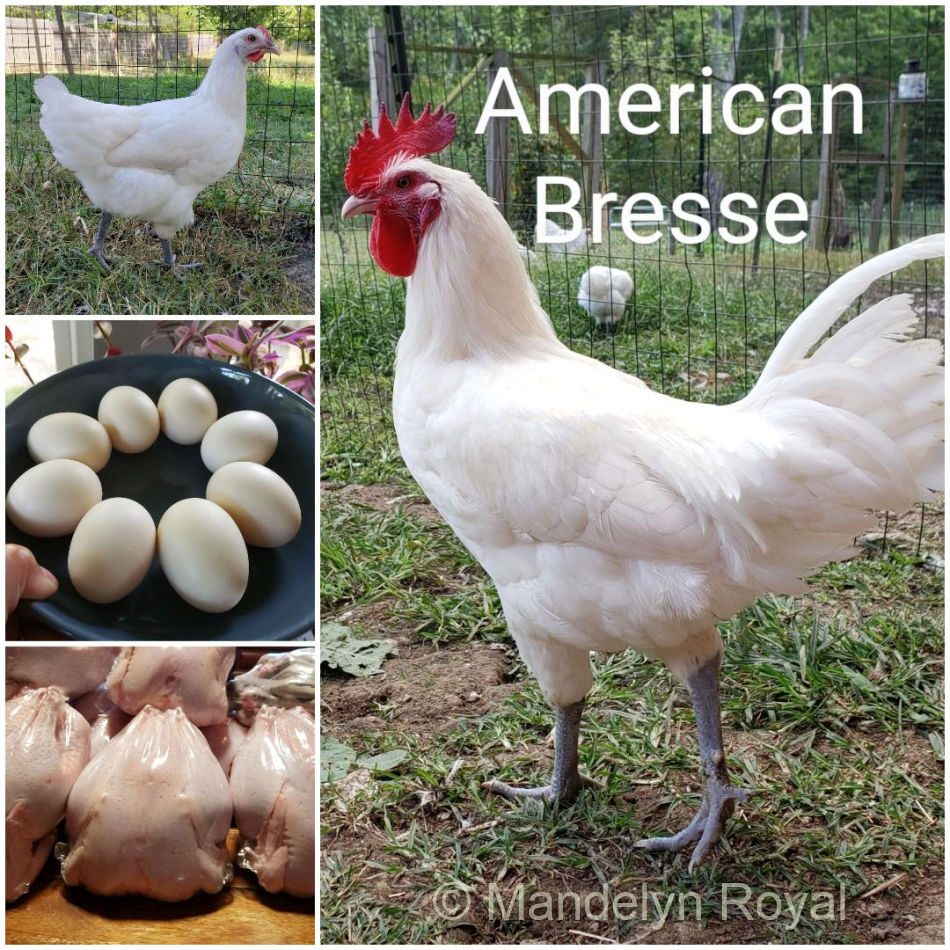
Photo credit: Mandelyn Royal.
